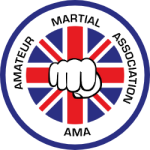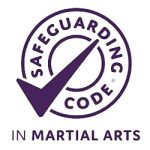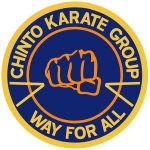it's much older than you imagine and yet, younger than you think
Before you read on, I will offer an apology for all true Karate historians that might stumble across this page. This is a ridiculously brief, possibly inaccurate and almost definitely incomplete summary of the evolution of the style of Karate that we follow and teach. It is here to give you an insight rather than detail and there are numerous other resources, on the internet, that will provide you with more, should you decide to do the research.
To plot the complete and truthful history of Karate is a virtually impossible task. Many historians, dedicated to the Martial Arts, have spent decades travelling, investigating and researching only to form opinions that other historians dispute. Many will say that Karate is an ancient art, created millennia ago by mythological warriors that rode on clouds and conversed with dragons. In some aspects they are correct (not about the dragons and clouds though), however Karate, as an entity in itself did not formally exist until 1933. Hence the introduction of, "older than you imagine and yet younger than you think". You see, Karate (as a formally recognised martial art) is less than 100 years old. However, its roots go back much further and spread much wider than Japan.
It helps to imagine Karate as the centre 'knot' in a bowtie of many ribbons. On one side there are all the 'threads' that form the knot and on the other side are all the different styles that spread out from the centre.
The Karate 'knot' took many years to tie in Ryūkyū a small group of islands south of mainland Japan, the largest of which is Okinawa. For more than 400 years, leading up to the 20th century, this small island was an important trading point in South East Asia doing business with Japan, China, and other Asian countries like the Philippines and Thailand. Of course many of these countries traded with others. Some basic research shows that each of these countries developed their own Martial Arts long before this time and a brief study of these arts show similar techniques with current Karate moves. In Thailand, Muay Thai can be traced back to its origins in the 16th century. Kali, in the Philippines, was first used before the 1500s and there are records of unarmed combat techniques in China dating back to the Zhou dynasty (1111–255 BC).
Kung Fu (Chinese unarmed combat) is known to have a significant input to the development of Karate. However, before it was imported to Okinawa one train of thought is that it was, itself, influenced by the teachings of a Buddhist Monk (Bodhidharma) from India, skilled in Kalaripayat (Indian Martial Art). This Buddhist influence help emphasise the 'duality' of the skills by giving equal priority to training the mind as well as the body. Bodhidharma began training at Shaolin Monasteries which ultimately lead to the creation of Shaolin Kung Fu.
This fighting art, from Northern China, combined with White Crane Kung Fu (created by Fang Qiniang a female martial artist) from Southern China seem to be considered by many as the key elements that formed the Okinawan Martial Art that eventually became Karate.
So, in the early 20th Century the threads of different styles of self defence were converging on Okinawa. For brevity I have not made any reference to the massive and complicated political changes that were taking place around this time although these did have an impact upon the development of martial arts.
At this time the fighting style was referred to as Toudi, Todi or Toude by the Okinawans (depending upon local dialects). It was written as 唐手. 唐 means China and 手 means hand, so it was actually called ‘Chinese Hand’. at the time China was very much in favour in Okinawa and was considered to be the height of sophistication. In 1901 they started to teach Kata (forms) in Okinawa elementary schools. These Pinan kata are still taught in our training sessions and used in Gradings.
In 1856 Gichin Funakoshi, known by many as a "father of modern Karate", was born. By day he would work as a teacher (Sensei) but in the evenings he would train in martial arts. In 1922, the Japanese Ministry of Education invited him, along with other Masters, to Tokyo to give a demonstration of their art. This lead to its' popularisation in mainland Japan.
In 1933, the Okinawan art of karate was officially recognised as a Japanese martial art by the Japanese Martial Arts Committee known as the "Butoku Kai". At the same time political relations between Japan and China were deteriorating. The Japanese invading China didn't help matters much. The name 唐手 'Chinese Hand' was not seen to be acceptable so the masters of the various styles of Okinawan karate conferred to decide a new name for their art. The first character 唐 was substituted with 空 (kara), meaning 'empty' and so 'empty hand' 空手 or Kara-te was 'officially born in 1935. And the 'knot' of many threads was tied. It should be noted that the original name of Chinese Hand, in Japanese, could also be pronounced many ways, including kara-te, but the Karate that we refer to now is Empty Hand.
Another point of interest is the fact that although it is referred to as 'empty hand' and considered as 'unarmed combat', Karate in Okinawa did include the use of weapons such as the Bo, Sai, Tonfa and Kama. These were used by the local police at that time and, in the spirit of retaining our traditional links, we regularly train with these weapons. Training and using these weapons is referred to as Kobudo.
The modernisation of Karate in Japan also included the adoption of the white uniform that is often referred to as a 'gi'. However that literally translates as 'clothing or cloth' and really should be preceded with another word such as 'do' - the way i.e. dogi, or 'keiko' - practice i.e. keikogi. In line with other martial arts it is mostly called just karategi. At the same time coloured belt ranks were introduced. Both of these innovations originated from Judo. The founder of which, was one of the men Funakoshi consulted in his efforts to modernise Karate.
...and so, we come to the other side of the knot.
Although I have painted a picture of a unified Okinawa style Karate, this wasn't actually the case. Prior to the 'modernisation' there were three regions of Okinawa and three styles of Karate; Naha-te, Shuri-te and Tamari-te. However the masters of each of these styles agreed to work under the overall 'banner' of Karate. Of course, as it was before the agreement, there were soon multiple style emerging after.
Funakoshi's style became known as Shotokan is named after Funakoshi's pen name, Shōtō (松濤), which means "waving pines". Kan means training hall or house, thus Shōtōkan (松濤館) referred to the "house of Shōtō". It is still the most widely practised style of Karate worldwide.
As different Masters trained they started to adapt the techniques and split away to form their own dojos. Eventually many different styles were formed. Gōjū-ryū (剛柔流) 1929, Shitō-ryū (糸東流) 1931, Shōrin-ryū (少林流) 1933, Wadō-ryū (和道流) 1934, Shūkōkai (修交会) 1946 Isshin-Ryū (一心流) 1956 and Sankukai (三空会) 1971. Shotokai (松濤會) is not an official style of Karate it is the name of the association launched by Gichin Funakoshi originally in 1930.

1889 - 1952
Kenwa Mabuni was one of the first karateka to teach Karate in mainland Japan and is credited as developing the style known as Shitō-ryū. He was one of the original Masters that travelled with Gichin Funakoshi with the aim of popularising Karate.
Born in Shuri on Okinawa in 1889, Mabuni was a 17th generation descendant of a famous warrior; He began training in the art of Shuri-Te at the age of 13, under the tutelage of the legendary Ankō Yasutsune Itosu.
He trained diligently for several years, learning many kata from this great master. It was Itosu who first developed the Pinan kata, which are still taught to this day.
One of his close friends, Chōjun Miyagi (founder of Gōjū-ryū and inspiration for the famous Mr. Miyagi in the movie The Karate Kid) introduced Mabuni to another great Master of that period, Higaonna Kanryō, and began to learn Naha-Te under him as well.
While both Itosu and Higashionna taught a 'hard-soft' style of Okinawan 'Te', their methods and emphases were quite distinct: the Itosu syllabus included straight and powerful techniques whereas the Higashionna syllabus, on the other hand, stressed circular motion and shorter fighting methods. Mabuni merged these facets into Shitō-ryū, which still focuses on both hard and soft techniques to this day. Mabuni was legendary for his encyclopaedic knowledge of kata and their bunkai applications.
By the 1920s, he was regarded as the foremost authority on Okinawan kata and their history and was much sought after as a teacher by his contemporaries.

1921 - 1998
Chojiro Tani was born in Kobe, Japan. He initially trained under Chojun Miyagi, the founder of Goju-Ryu, and completed this training with the 2nd Dan. After a few months, in 1939, Miyagi Chōjun returned to Okinawa and Kenwa Mabuni took over as his teacher.
Upon graduating from university, Tani began learning Shuri-te and then Shitō-ryū from Mabuni as well. After many years of training under Mabuni and becoming one of his most senior students, Tani received the certificate of succession from him and became the head of Shitō-ryū, enabling him to use the name Tani-ha Shitoryu.
After the Second World War, Tani Sensei started to teach Karate in an open air car park in the centre of Kobe. He named his group Shukokai, which loosly translates as 'Way for all'. This later became the name of the style he taught. His popularity soon grew and one year later, in 1949, he built his own Dojo attached to his house.
Shūkōkai was designed around the study of body mechanics, is very fast due to its relatively high stance aiding mobility, and is known for the double hip twist, which maximises the force of its strikes; making it one of the most hard-hitting Karate styles..
1941 - 1995
Shigeru Kimura was born on 2 March 1941, in Kobe, Japan. He began practising Judo at the age of 10. Later, he also practised Kendo.
In 1957, aged 16, Kimura began his Karate journey under Chojiro Tani. Initially, Kimura found the training very hard, but he dedicated himself to his training and was soon one of Tani’s best students. In 1961 aged 21, Kimura won the All Japan Championships. The following year he retained his title. However, he began to question the validity of the techniques used in his tournament successes. He felt that the techniques he used would be ineffective in real combat situations.
With the blessing of Tani, he began to explore how his techniques could be improved. Building on Tani’s use of body mechanics, Kimura took a scientific approach to improving his techniques. His research lead to new advancements in Shukokai Karate.
Kimura travelled to Southern Africa in 1965, to promote his improved version of Shukokai. He arrived on the African continent not being able to speak English. However, he was able to communicate his ideas. He taught in Zimbabwe, Mozambique, and South Africa.
In 1968 Kimura arrived in the UK, where he conducted a number of courses and demonstrations, assisted by Yoshinao Nanbu, another of Tani’s students who had been promoting Shukokai Karate in Europe. This included a demonstration held during a tournament at Crystal Palace and an open course in Chigwell Essex.
The Shukokai Karate Union (SKU) was established in the UK in 1969 and Tani was named President, with Kimura being named Vice President and Nanbu was named Chief Instructor. Students of the SKU included Stan Knighton, Bob Aikman, Roy Stanhope, Peter Consterdine, and Eddie Daniels. Some of these went on to train the founders of the Chinto Karate Group.
As ambassadors of Shukokai Karate, Kimura and Nanbu travelled around Europe, showcasing their version of Shukokai. Kimura also travelled to the Glasgow dojo of Tommy Morris, an early pioneer of Shukokai Karate in Europe. Kimura taught a number of classes at the dojo. He also travelled to France, Belgium, Yugoslavia, and Norway to promote Shukokai.
In 1970, with Shukokai Karate established in Europe and Southern Africa, Kimura moved to the United States. His aim was to promote Shukokai in the country. In 1972 Kimura opened his own dojo in Hackensack, New Jersey. The dojo also functioned as the Shukokai Headquarters.
Even though he was based in the US, he made frequent visits around the world, conducting courses and gradings. By 1981 Shukokai had become established around the world.
On 7 July 1995, the Shukokai world was shocked by the sudden death of Shigeru Kimura from a heart attack. He was only 54 years at the time and was survived by his wife, who he had married in 1980. At the time of his death he was a 9th Dan and he was posthumously awarded his 10th Dan.
Self-improvement was at the heart of who Shigeru Kimura was. He always looked to improve himself and his Karate. His teachings and legacy continue through his students. The world lost a great martial artist. There is no telling where he would have taken Shukokai Karate.
where does the Chinto Karate Group fit in?

With the Shukokai Karate Union well established in the UK, one of his students – Sensei Stan Knighton (10th dan) eventually took over as Chief Instructor. This set the scene for numerous clubs and groups to form around the country basing their training upon the teachings of Shigeru Kimura.
In the early 80s, under the influence of Stan Knighton (see above) Shukokai training started in Norfolk, with clubs in Gt. Yarmouth and Norwich. The Chinto Karate Group evolved, in 1998, following a reorganisation of the club in Gt. Yarmouth and Tracy took over as the Head Coach. On a national level, eventually, as often seems to be the way, various differences in approach lead to the founding members of the SKU splitting and, ultimately, setting up the Shukokai Karate Federation and Shukokai Karate Association.
This brings us bang up to date. With Tracy at the helm of the Chinto Karate Group. The training that she received in the 80's and 90's can be traced back to it's Okinawan origins via the various Masters and their students mentioned above.







